
Sainte-Marguerite Headwall near Sept-Îles, with Bayard russell climbing the first pitch of Speedy Gonzalez.
I was sat engulfed inside the comforting arms of a large chair. A fireplace made from red brick, smoke tainted and heat scorched, held burning logs the size of small canoes. The glowing logs shimmered in the subdued light of the living room. Friendly, boisterous and jovial – people sat all around while watching Super Bowl 50. The last of my four lectures was over, which was the largest, the Mount Washington Icefest, and in the morning, Bayard Russel, Michael Wejchert and I, would drive the seven hundred miles from North Conway, New Hampshire to Sept-Îles, Northern Quebec.
At the time, I didn’t appreciate how far north we were heading, but if I had taken the time to look at a map, I would have seen that Sept-Îles is level and quite close to Newfoundland. It was nine p.m. Bayard and I still had to finish packing for our whistle-stop of Quebec ice, but at least we had shopped for food and done some form of preparation, although the preparation consisted of looking at a few pictures and deciding that’s where we wanted to climb. This ‘preparation’ was completed by looking at a few pictures of the hostel we hoped to stay. It may have been helpful to have taken the name and address of the hostel or even contact them, but we were only a drive away, who needs preparation, it was just ice cragging in the next country over, right? “Do you speak French?” “No.” “Ah, we’ll be fine.” We would just drive fourteen hours and climb. It’s not like we were travelling to another planet in a frozen solar system where we could not communicate…
After collecting Michael, we left behind a dark North Conway at six a.m. The sky was overcast. I had visited Canada nine times, including Quebec City and Montréal, although I had not climbed in the east. The east of Canada evoked austere, wilderness, bone numbing cold and a space so big and empty, my mind swam with anticipation. For some reason I have always been drawn to these austere and vast open spaces, and the people that live locked inside these cold and desolate wildernesses fascinated me more. How and why do people live in such a harsh environment and would they continue living in such challenging conditions if they had another choice. Do they enjoy this weather induced hardship, does it become ‘normal’ to live with bone numbing cold and did this challenging weather make the people rely on each other more, which in turn, in my experience, makes the Quebecois people very friendly and extremely helpful?
The three of us travelled north, up over Crawford Notch and past the Mount Washington Hotel in Bretton Woods where the IMF was established in 1944. Bayard’s truck, a large silver GMC Sierra – a big truck, which for some reason appeared to fit with my friend’s big character, guzzled petrol like my friend guzzled cheap beer. We stopped at a small café as the day came to being in a town called Bethlehem. I watched a man with a beard raise the stars and stripes above the Bethlehem post office. Old Glory whipped in the wind. Winter at last came after four hours on the open road. I sat in the passenger seat of the silver truck and sensed the massive expanse of water somewhere to my right.
North, higher than Nova Scotia and Prince Edward Island. North – north, until hitting Quebec City at the five-hour mark. “I could drive slower, it would save fuel and money, but I like passing people.” Bayard said as he pushed the GMC gas pedal and the truck muscled past another car. I had visited Quebec once before and it was just like I remembered, cold and windy, but friendly in a must move quick to get out of the cold kind of way.
We cross the Pierre Laporte Bridge with the Pont de Québec to our right, both bridges span the Saint Lawrence River. The Pont de Québec, a large iron structure made with rivets and girders and angles, took thirty years to build, costing the lives of eighty-eight people and it is still the largest span of a cantilever bridge in the world. Pack ice erupted beneath the bridge and clung to iron and concrete. The ice was anarchic, a jumble, a frozen turmoil. Paves of thick ice thrust toward the cloud filled sky, it almost felt like the lives lost to build the bridge made the water and the ice seethe.
The Pierre Laporte Bridge, the bridge we were crossing, is the longest non-tolled suspension bridge in the world and the longest suspension bridge in Canada. The bridge was named after a provincial cabinet minister who was kidnapped and murdered by the Front de libération du Québec in 1970 as the bridge was coming to completion. How these two bridges capsulated hardship and austerity and death, combining beauty and endeavour. The two bridges, and the misty milky sky, and the cloud and smoke swilling around the sky scrapers, fitted perfect with the surroundings and the mood.
We went wrong, got a little lost, although it wasn’t really a surprise and found ourselves in the centre of the city. Michael and Bayard called into the Mountain Co-op in the city centre as we had realised we didn’t have a guidebook and none of us knew where the climbs were. In fact, not only short of a guidebook, we didn’t have a road map or any idea how to get through Quebec City or the number of the road we should be looking for, which eventually would lead us north. After acquiring the guidebook, we bought a road map, and with instruction of the road number we needed from a very helpful lady in the petrol station, we continued in our quest for steep Quebecois ice and a mythical village called Sept-Îles.
Leaving Quebec City having found the correct road, the 40, which would eventually lead to the 138, the only road north, we passed the Île d’Orléans Bridge. Quebec appeared to have more than its fair share of historic and dramatic bridges. The Orléans Bridge was commissioned as a job creation project in the great depression of 1934 and completed in 1935. Before the bridge was built, Orléans Island could only be reached by ferry or walking when the Saint Lawrence was frozen. In this crazy winter of warmth and no snow and storms I suspect people would have to be very hardy and good swimmers to cross the Saint Lawrence at the moment. Turning and taking one more glance at Quebec City, that was once more lost in dirty swirling cloud, I watched a solitary gull fly upstream while beneath the bird the earthquake of ice groaned.
A free ferry service took us across a turbulent inlet at Tadoussac. A woman with piercing grey eyes, that sparked from a face buried in balaclava, wrapped a yellow rope around a rusting girder to secure the ferry. The GMC rumbled across grated metal and we continued north while all of the time skirting the coast with its millions of frozen baubles bobbing and glittering. At times the road veered inland and spruce heavy with snow lapped the road on either side. “Keep an eye open, this is typical swamp donkey terrain,” Bayard warned.
Michael was driving now, his dark eyes stared directly ahead as he pushed the throttle, the GMC penetrated a blizzard that had hitched a ride on an easterly and was shearing the coast and cutting the deeply frozen land. I felt space and emptiness and a vast longing to experience this empty land and all it could throw at me.
“Baie-Comeau, Baie-Comeau, Baie-Comeau.” Bayard, sat in the back drinking cheap beer, he repeated the name of the town three times enjoying the texture of the words and the rounded taste. I affectionately laughed as his deep, American, drawn-out-drawl, said the place name and the obvious pleasure he received from saying it. Michael had spent a lot of time with Bayard and had grown used to his eccentric and endearing qualities. In some ways Michael was the steadying influence on this, no direction whistle-stop, but even Michael had that tide of New Hampshire recklessness running through his young bones and appeared not concerned at all that we had no idea where the hostel was that we were hoping to stay. We had brought along a tent and Michael had brought a stove but he had forgotten fuel for the stove. “Have you two any cooking implements? You know, stuff to spread shit and stir stuff and eat from? I asked. “I have a spoon.” “I have a spoon.” “Bollocks, I don’t have a spoon. I need a spoon.” “Do you have a knife?” Michael looked at me from his upright driving position as if I were a dumb ass, “Nick, we’re Americans, of course we have knives.” I felt seriously under gunned on the cutlery front.
The frozen chill became even deeper as our direction maintained north with some east, and as we continued north with some east with no real plan about how to reach the climbs we hoped to climb, we continued north with some east with no idea where we would be staying, but the most concerning factor haunting me in our continuing north with some east was the lack of cutlery. I need a spoon, how the hell could I eat muesli without a spoon and the thought of using Bayard or Michaels knife to spread my, I can’t believe it’s not butter, onto my bagel, after I had witnessed the both of them sawing into lumps of congealed meat and fat was not a thought I wanted to contemplate.
A dark and winding road, swirling with sparkling snow devils lit by the lights of the truck, took us through small towns with the sea rolling frothy white and spraying a frozen smoke over the sea wall and the boulders. Wooden houses or trailers perched on a concrete platforms had small white lean-to tents attached to the front door and strong white tents masquerading as garages to battle, and hopefully combat, the elements. The truck thermometer measuring the outside air temperature said eight degrees Fahrenheit, when converted into a scale I understood this meant it was cold. We passed through a large town with a supermarket. As my wittering about not having a spoon was becoming too much, Michael and Bayard suggested a visit. I walked the well-lit isles and found a $2 pack of four spoons which I bought by debit card having no Canadian dollars. Possibly a good deal to end my lack of cutlery concern, but now I couldn’t stop thinking about how much I had just paid in bank charges for a spoon, which was a set of four spoons as the supermarket didn’t sell singles, and having now bought four spoons, it was obvious we would find the hostel which would have room and would be stacked full of spoons. I suppose, all in all, the bank charges from using my debit card to buy four spoons would be a small price to pay given how cold it was outside and my lack of excitement about the prospect of camping. To completely seal the deal in finding the hostel, Michael had bought a big canister of white gas for the stove.
At eight p.m. we drove in to the outskirts of Sept-Îles along a duel carriageway. Behind the truck – very close behind the truck – the locals appeared to drive like people from France, pushy and pressurising, an inch from the rear bumper. “Erm, I thought you said this was a one horse town, the end of the road?” We were driving through a modern urban sprawl with flashing neon and hotels and supermarkets, and a St-Hubert chicken restaurant with a big sign showing a rooster with a bowtie and a red quiff and a smile, which I couldn’t understand as no rooster would be smiling just before he was about to be killed and fried. We trundled past another chicken restaurant that in other parts of the world is known by the initials KFC, but we were in the east of Canada, so this one was PFK (Poulete Frit Kentucky). This town was no single pony, this was a large modern town close to becoming a city, we were never going to find the hostel. And then Bayard voiced a thought that was not a thought any of us wanted to contemplate. “Dude, do you reckon there is more than one Sept-Îles?” I looked around and I could see the three of us, our faces were lit by flashing neon, screwed tight with concern, and our heads were all working with the same thought, ‘We have just driven fourteen hours and we have driven to the wrong place… FUCKER.’ Now I must admit, even I wanted to strangle that happy rooster as he looked down and laughed at our stupidity.
This place felt so far from anywhere, the thought that we were in the wrong place was sickening. This was going to turn out to be an expensive drive for a bit of sight-seeing. The only settlements on the paved road network that are farther north than Sept-Îles are Fermont, Radisson and Chisasibi, the last two in the extreme western portion of the province at the north end of the James Bay Road. If this wasn’t our Sept-Îles we were well and truly scuppered. The remaining settlements at higher latitudes in the province are mostly isolated Cree, Innu, or Inuit villages, with access limited to seasonal gravel roads, we sat in the truck wondering how the hell we could have been so stupid not to check where it was we actually wanted to be. Panic was almost setting in as we cruised the strip for the third time, and for the third time that laughing rooster looked down. I had serious reservations about my vegetarianism. “I know, why don’t we stop at somewhere with internet and look up the hostel?” It wasn’t really that intelligent, but at that moment it felt like I had just invented a solution to global warming, which given the temperature outside, if I had solved the problem of the world warming, I would have kept it to myself for a while longer.
We sat beneath the large glowing red of a Tim Hortons sign, all three of us had our phones to hand and typed in Sept-Îles Hostel and hit the button. This would be the critical moment because we knew this hostel was the same hostel that Bayard’s friends had stayed when they had visited Sept-Îles to come and climb the same climbs we wanted to climb, but it was these same friends that had told Bayard Sept-Îles was a one horse town in the arse-end of no-where, so would the hostel be in this town, in this Sept-Îles, would the climbing we had travelled all day to experience be close at hand?
The three of us watched our individual phone screens with trepidation. Four blue dots rolled across my screen… any minute, any minute, please let this be our town…
Postscript:
At the moment I’m sitting on a bus heading toward Logan Airport in the centre of Boston, my time in the east is done. A huge thank you to everyone who has once again made my time here very enjoyable and I cant thank you enough for the generosity and friendship you have once again shown me, cheers and all the best, till next time, Nick.
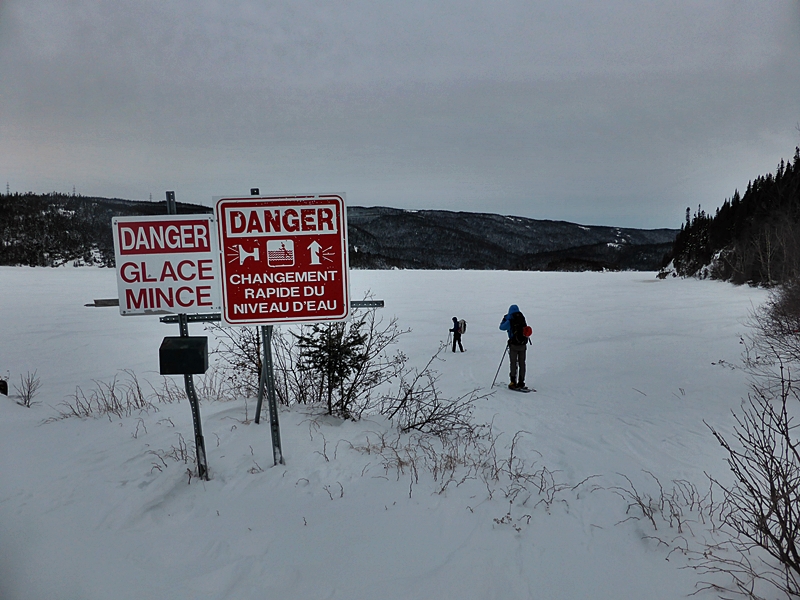
Finding the dam and Rivière Sainte-Marguerite, Michael, Bayard and I take to the ice. Over the two days we skinned along the river four times, thirty-four km in total. On occasion, the dam is released and our tracks disappeared beneath pools of brown water. We relaxed a little after speaking to a local who stopped to chat from his snow mobile and told us there was a release of fresh water sitting over the top of two feet of ice.

Approching Le Pilier Simon-Proulx WI 5, Speedy gonzalez WI 6+ and the unclimbed new route which I believe is called, Speed Trap, WI ? M?
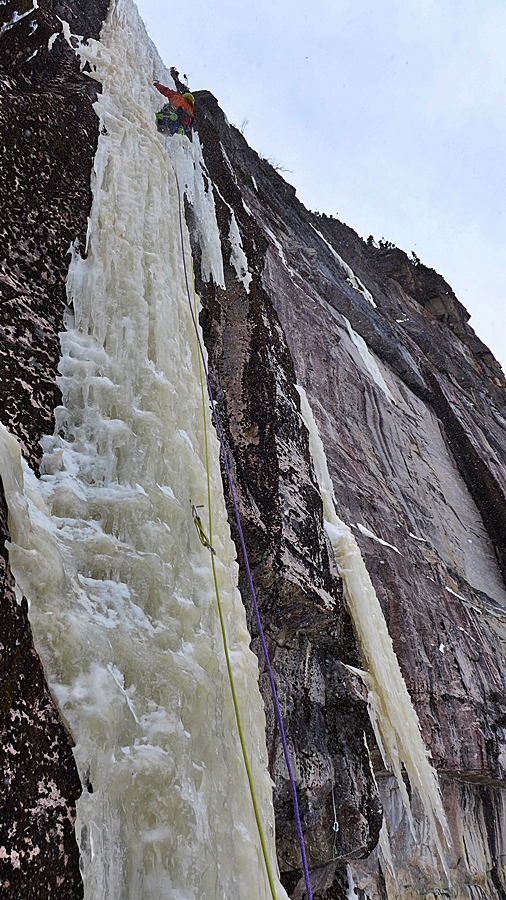
Myself half way up pitch two of Speedy Gonzalez. This pitch was possibly the most enjoyable and smile inducing pitch of the two days. A narrow and thin perfect skin of first time placements.
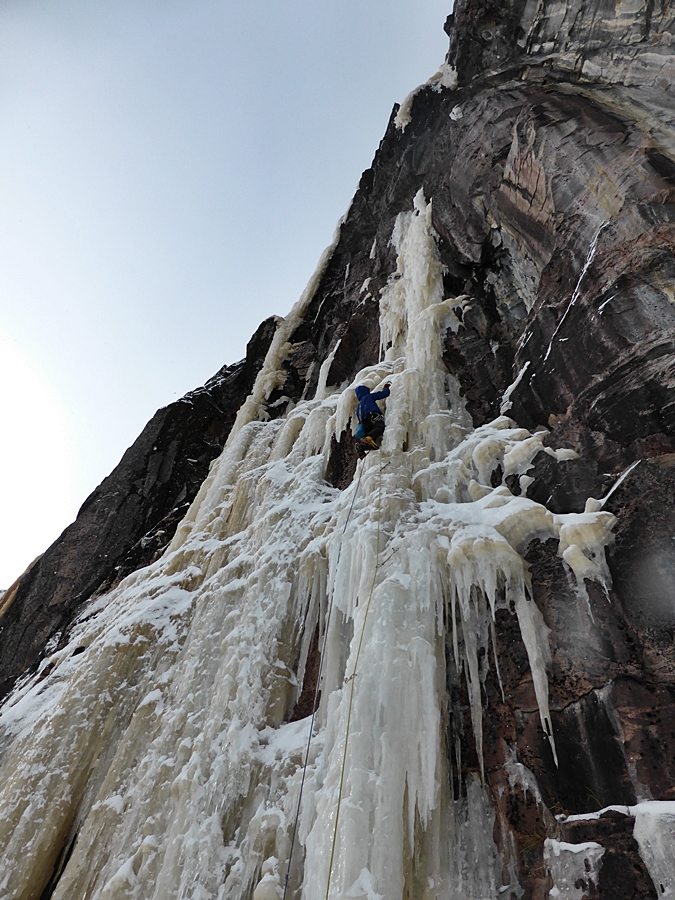
Day two. Bayard and I went back in, (Michael was sick with a serious manflu condition) and climbed the line to the right of Speedy Gonzalez. We attempted this line knowing nothing about it, but since climbing the route I have been informed it is called Speed Trap and is possibly still waiting to have a complete and clean ascent. Knowing this now, I’m glad I didn’t lead it clean. Good job on doing this route whoever you are because its a corker.
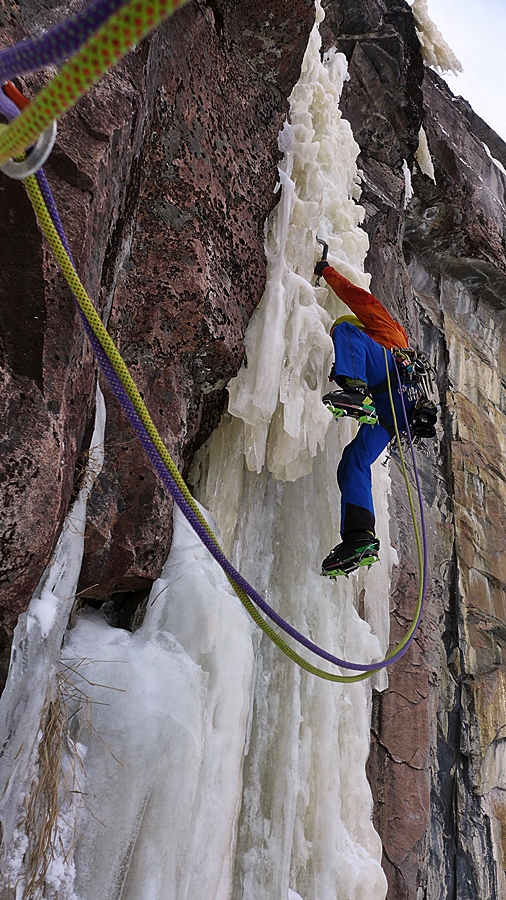
Myself setting off on pitch two, a brittle and steep pitch leading to a large overhang that is protected by three bolts.
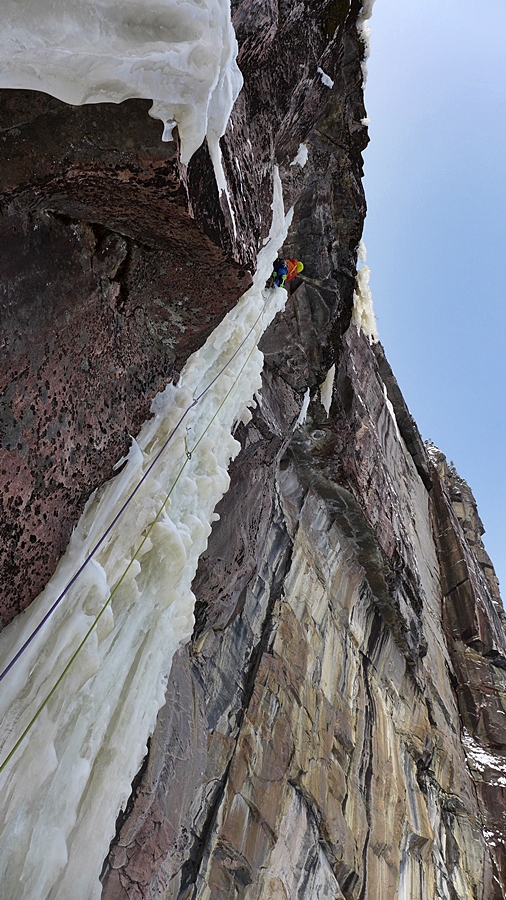
After trying quite hard and hanging in for a while, just above the overhang, I could not find anything to enable a final pull to establish myself above the overhang. Even if I had managed to get above the overhang, the next few moves would have been very difficult given the lack of ice. Having looked at pictures from another year this pitch looks like it would go on ice and be easier. As it was I used two points of aid and continued to climb the pitch free which was a truly technical and slightly wild, run-out experience, weaving between rock and ice. I’m glad I continued as the battle was very memorable.
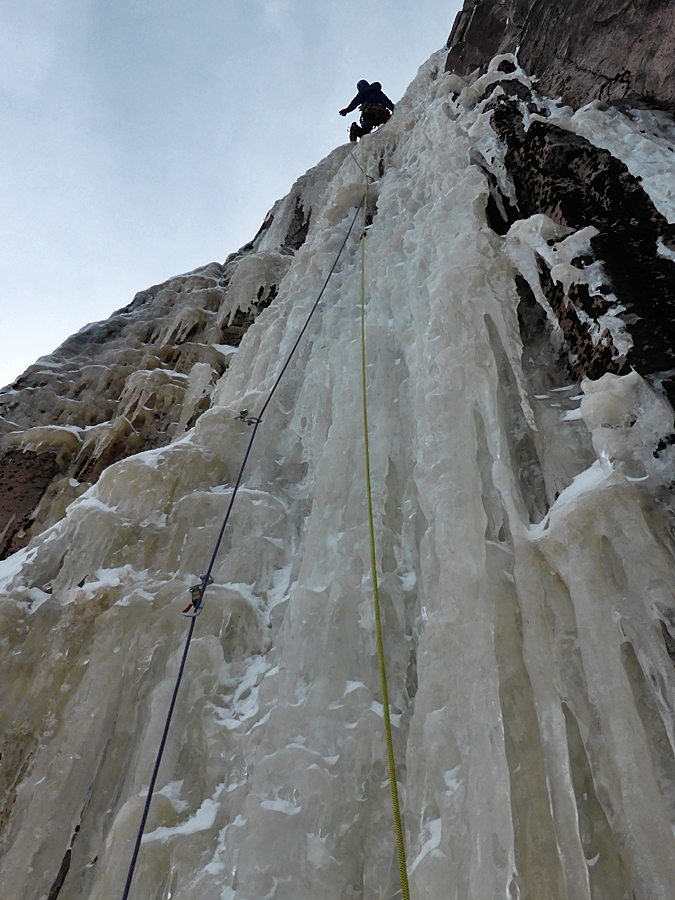
Bayard leading the third pitch of Speed Trap which led to our ice thread from the day before and a full seventy metre abseil to the ground. The eight and a half km skin out took three hours.

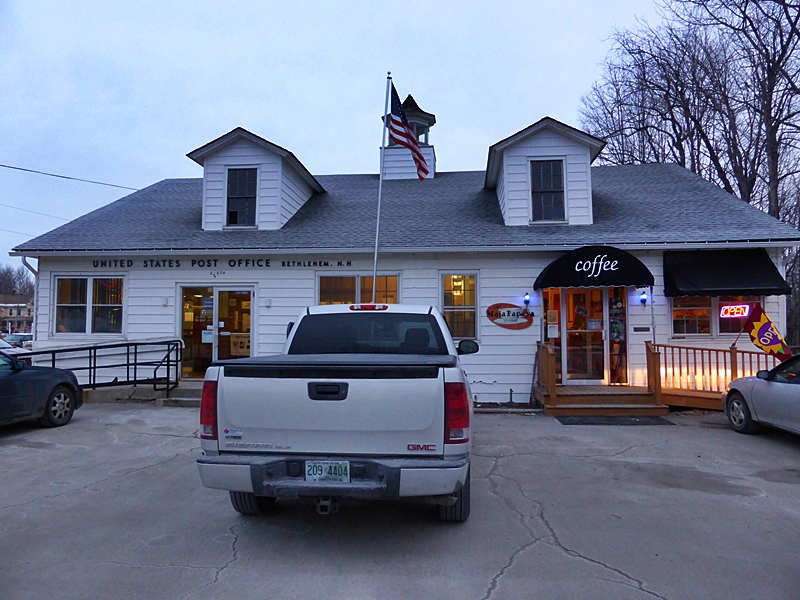
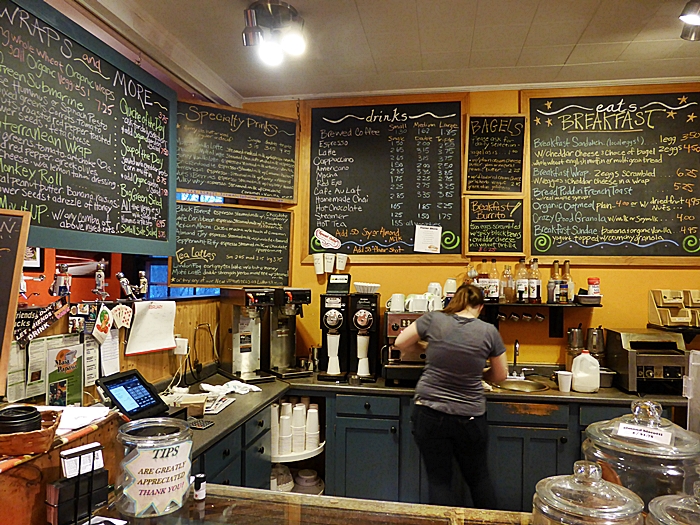
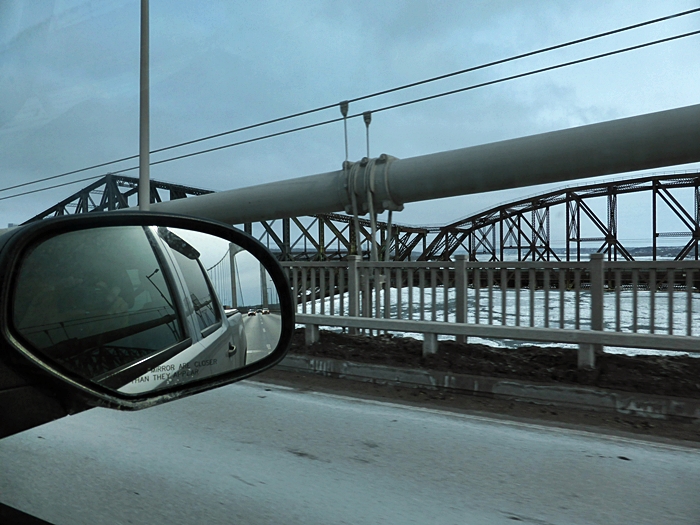
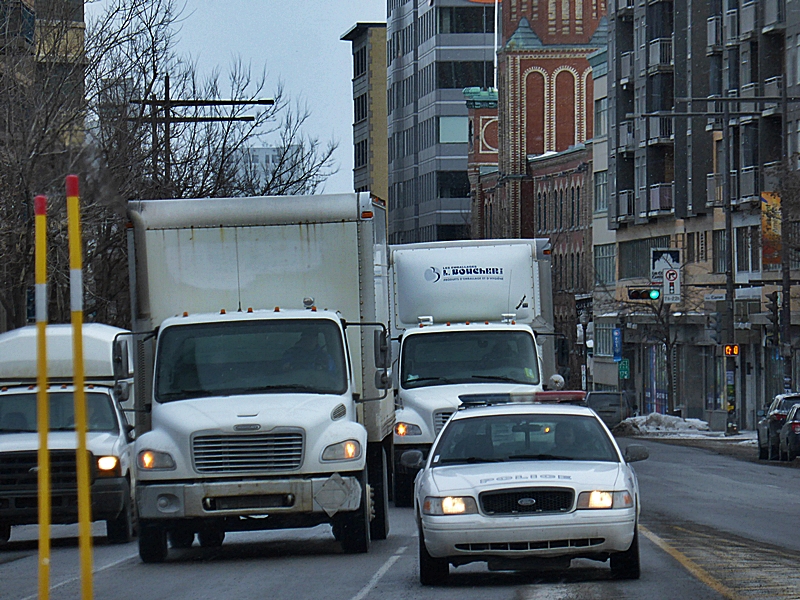
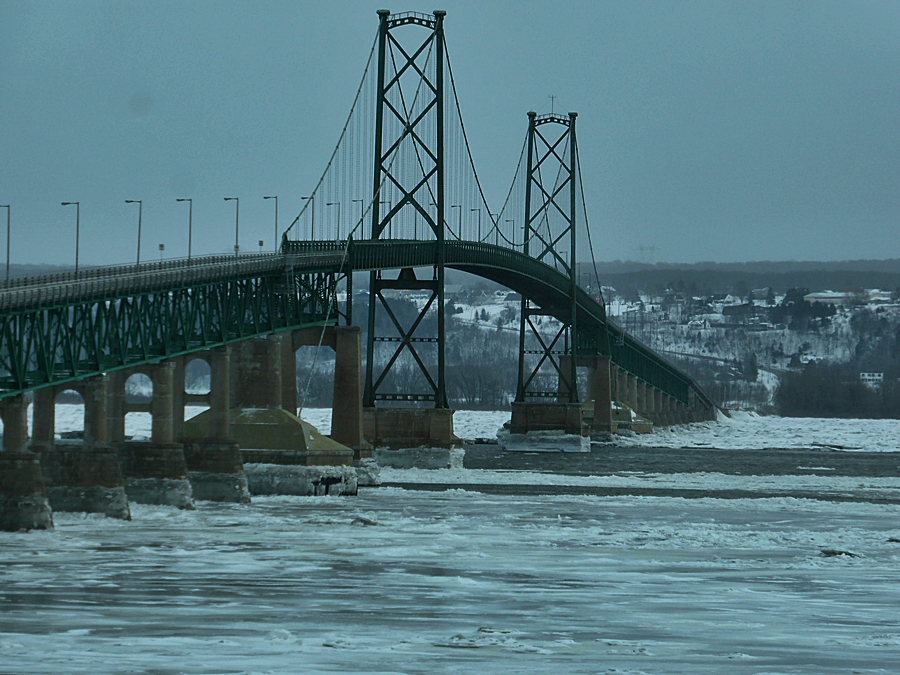
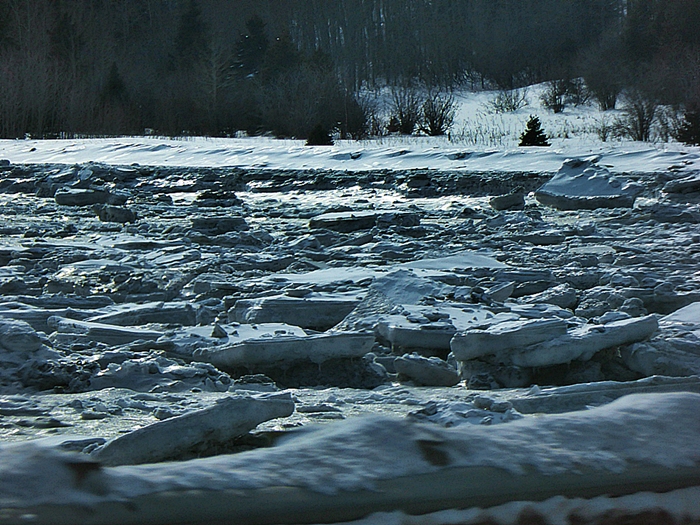
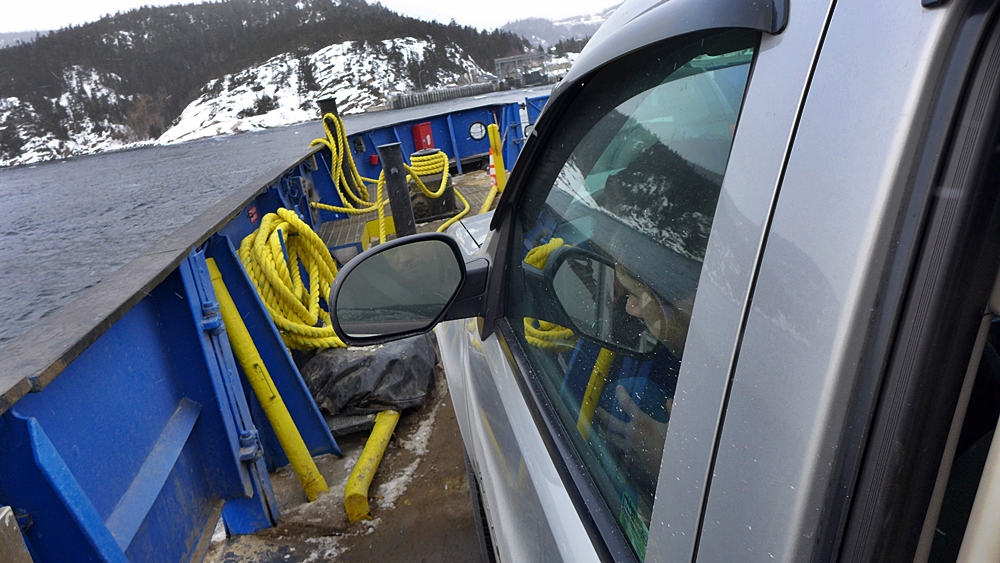
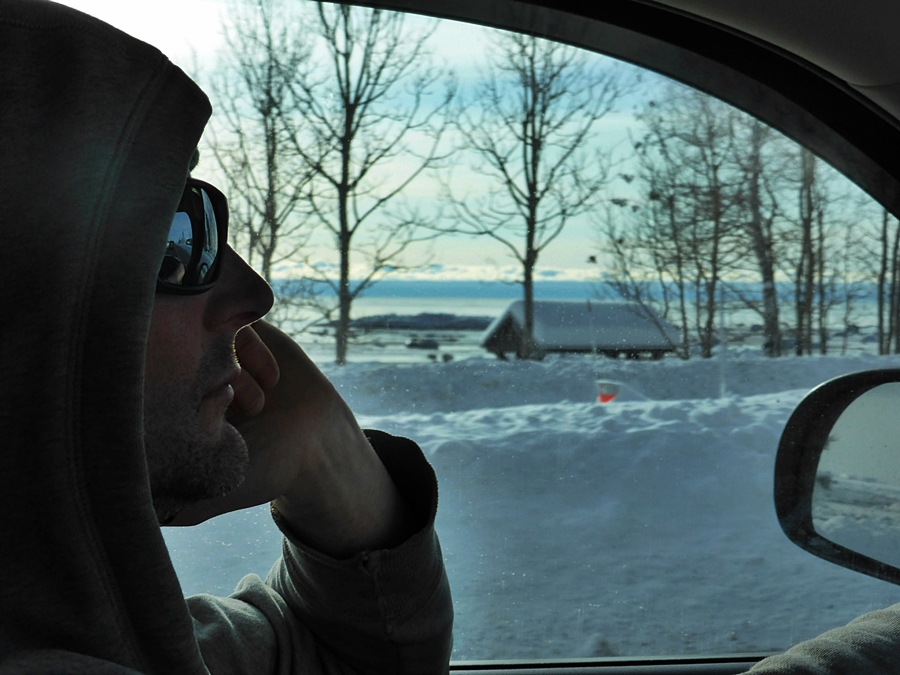
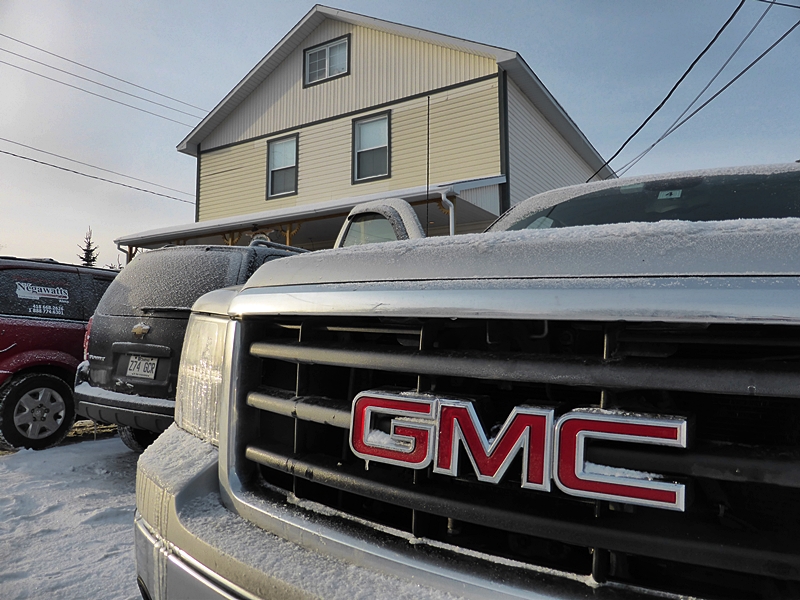
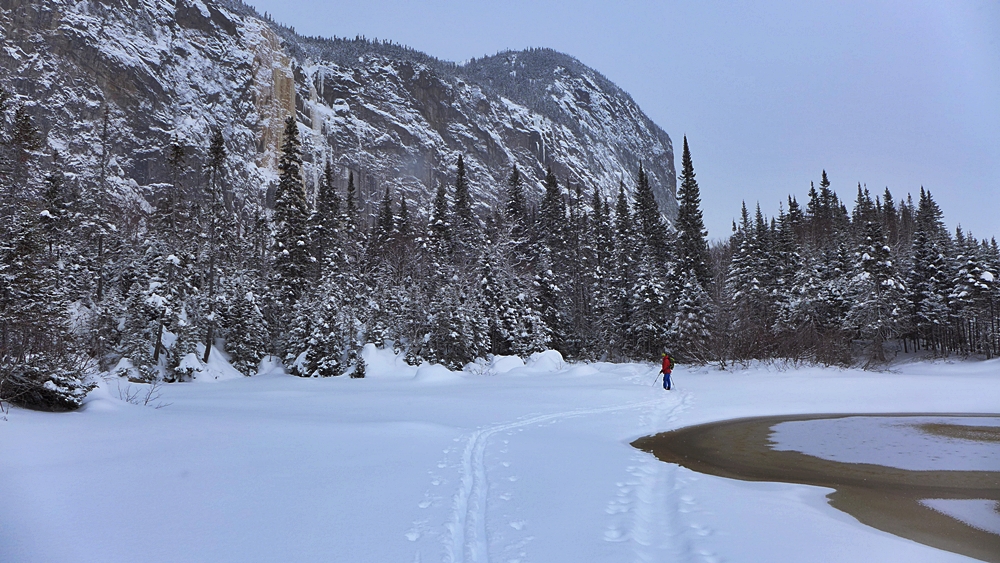
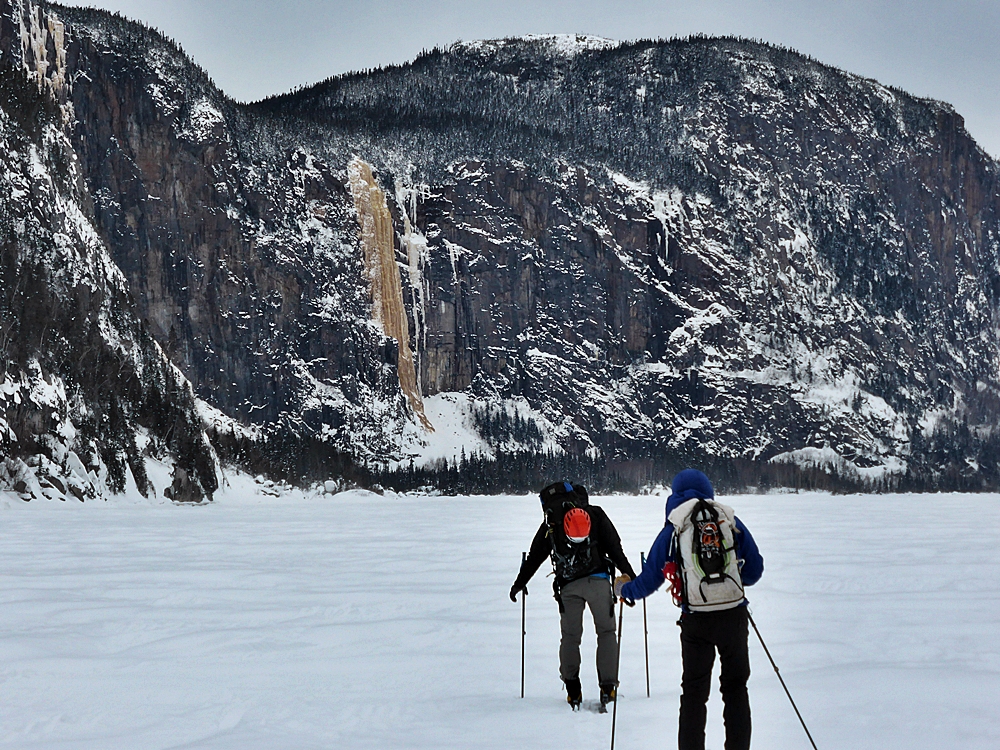
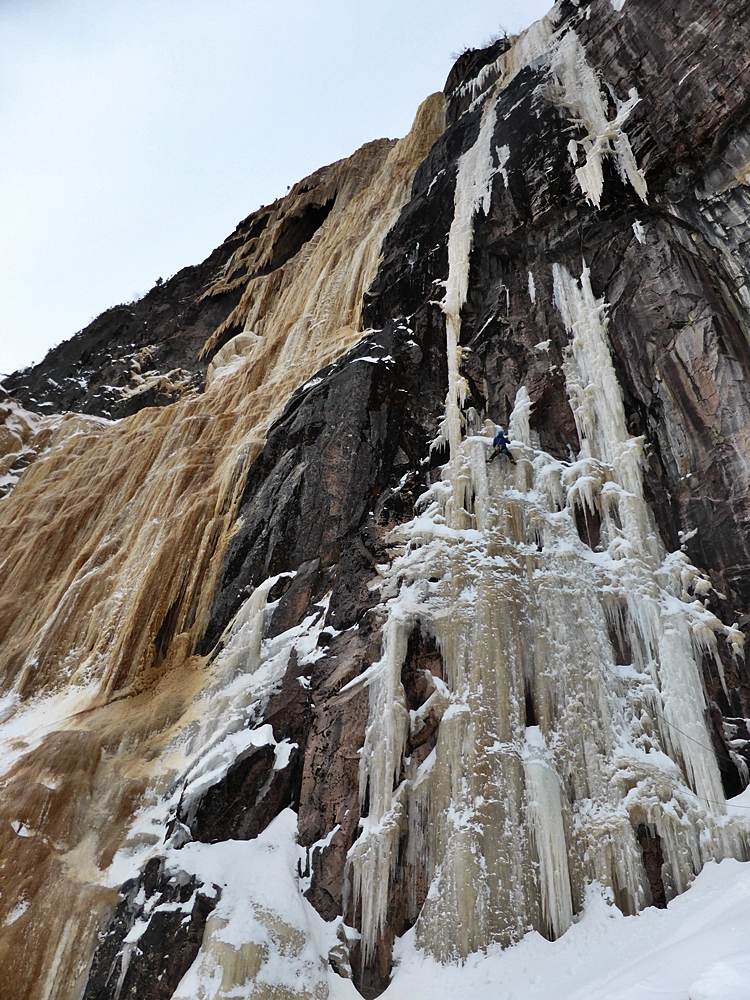
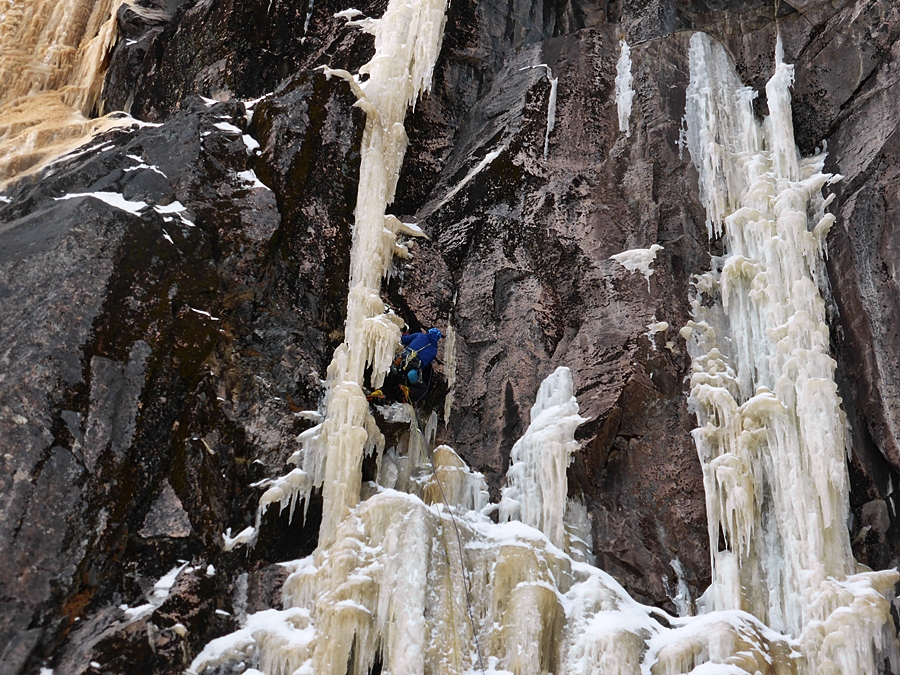
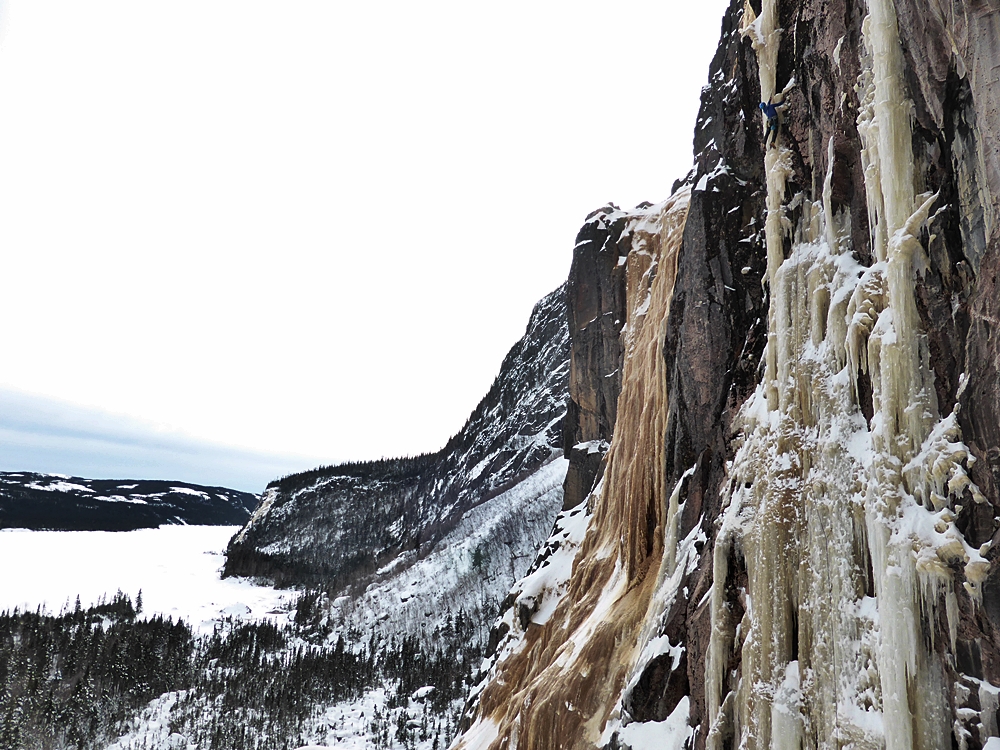
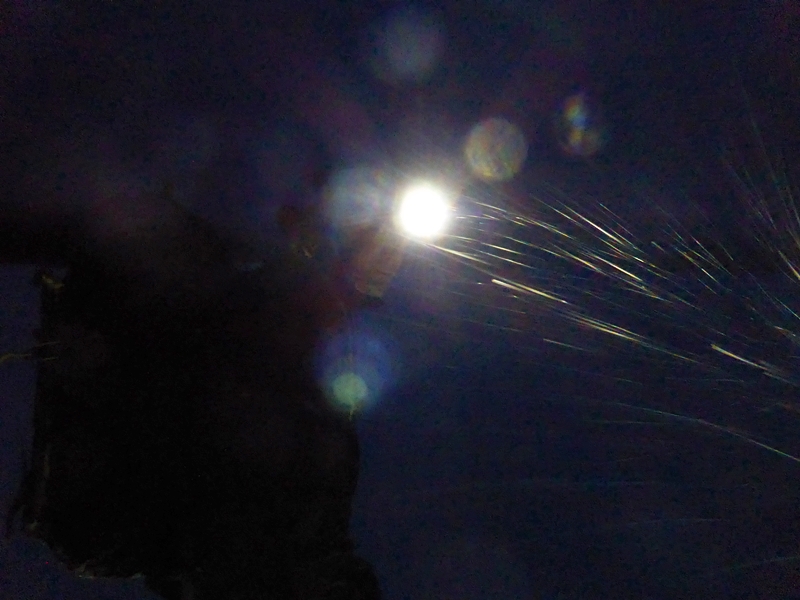
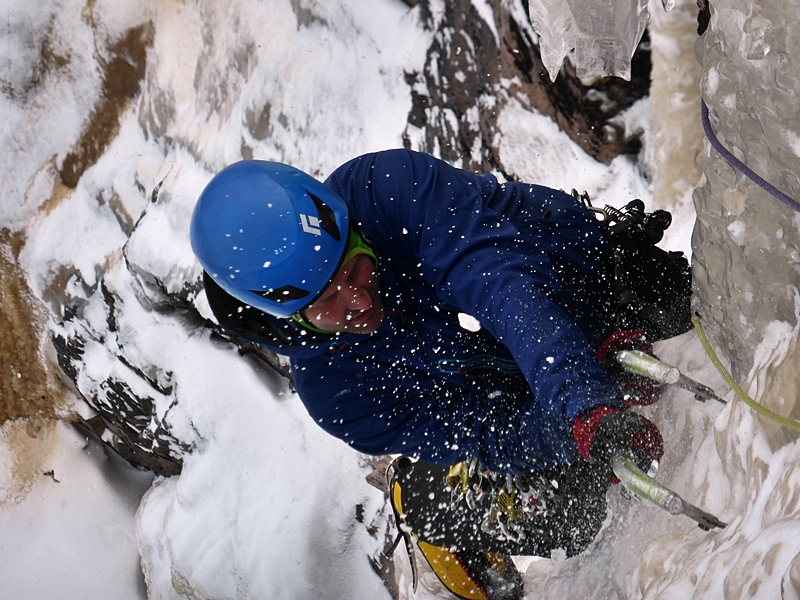









I really enjoyed reading this Nick!
Nice post! Always cool to see people from around the world enjoying Quebec ice! By the way it’s PFK (Poulet Frit Kentucky) in the french version. And don’t worry, everybody gets lost in Quebec City!
Glad you topped it guys! Let me know if you come over again! I mighty have something to offer to save you some approach Time!… Working on it right now! (The local with who you chatted)
Really enjoyed reading that. Nice well crafted piece, very evocative and amusing. I know that feeling of ‘destination doubt’.
I loved reading this. I saw the foreshadowing reference to 7-Iles as a village and I was like “nope, not quite” and it was fun to see what happened when you actually arrived there. (As an expat Quebecois I have actually been there. From the perspective of Montreal I think of 7-Iles as being super far east, though, not north.)
Hello Nick , this Line was put up by the prolific and late Benoit Marion with Damien Coté , it wasn`t freed but they climbed it to the top . Speedy Trap M9 A0 WI6+ . I am still waiting for full condition to repeat it and unfortunatelly it never occured since their ascent…… I am happy that brave like you gave it a try.
This river is risky due to warm water flushed by the dam few km among , weather as to be stable to get the ice thick enough, not like this year as i can see on your pictures….. For more info reply me !
Thanks
JF GIrard
This should be in Gripped magazine